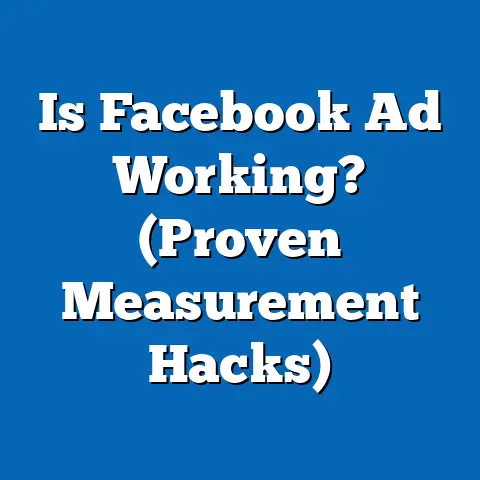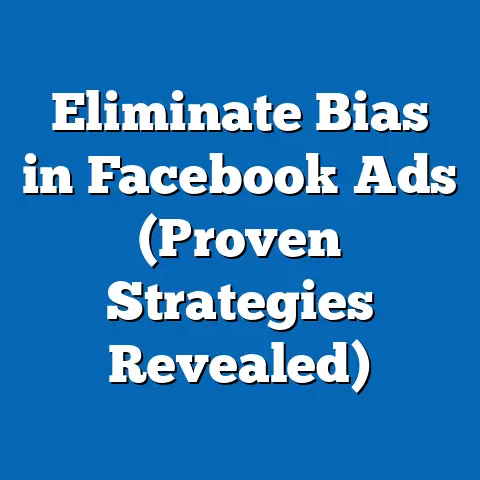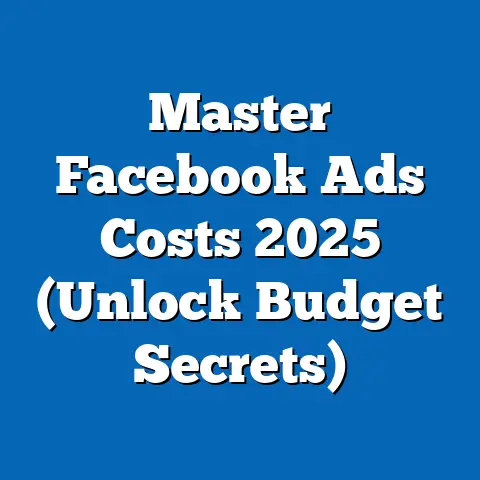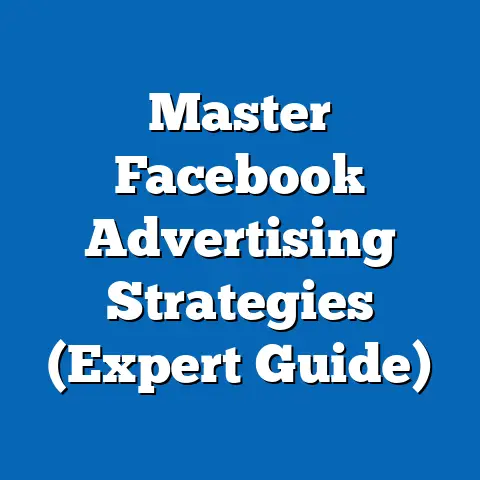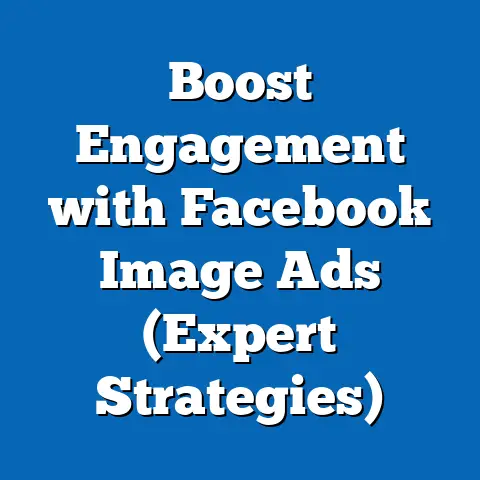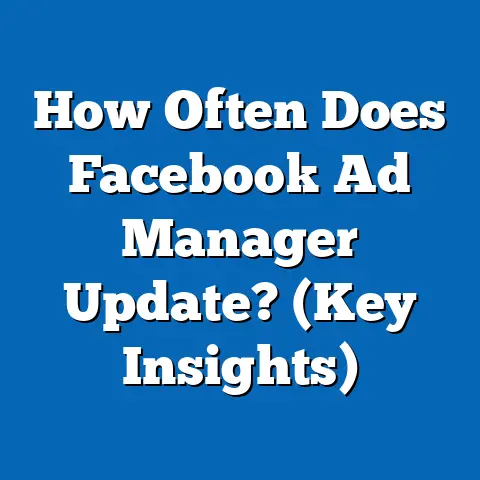Facebook Ad Sets vs. Ads: Key Differences (Expert Insights)
Facebook Ads have completely changed how businesses market themselves. Think about it – a local bakery can now target people within a 5-mile radius who love pastries, or a clothing boutique can reach fashion-conscious individuals based on their interests and online behavior. It’s a world away from traditional advertising, offering unparalleled precision and reach.
But navigating the world of Facebook Ads can feel overwhelming. I remember when I first started, I was completely lost in the Ads Manager, trying to figure out the difference between campaigns, ad sets, and ads. It felt like learning a whole new language.
To help visualize this, imagine Facebook advertising as a structured building. The campaign is the overall project, the ad sets are the individual floors, and the ads are the rooms within each floor. Each element is interconnected, but serves a distinct purpose.
In this article, I’ll break down the hierarchical structure of Facebook advertising, focusing on the critical roles of ad sets and ads. You’ll learn how ad sets function as containers for ads, and how their strategic setup directly impacts your campaign’s success. Get ready to unlock the power of Facebook advertising!
Understanding Facebook Ads
Facebook Ads are essentially paid messages that businesses use to reach a specific audience on Facebook and Instagram (and sometimes other platforms within Meta’s network). They’re designed to look like organic posts, seamlessly integrating into users’ news feeds, stories, and other placements.
But unlike organic posts, which rely on algorithms and user engagement to gain visibility, ads guarantee reach based on your budget and targeting. This makes them a powerful tool for:
- Driving Traffic: Sending users to your website or landing page.
- Generating Leads: Collecting contact information from potential customers.
- Boosting Sales: Promoting products and services directly to your target audience.
- Increasing Brand Awareness: Getting your brand in front of more people.
Facebook offers a variety of ad formats to suit different business goals and creative preferences:
- Image Ads: Simple yet effective, using a single image to convey your message.
- Video Ads: Engaging and dynamic, capturing attention through moving visuals.
- Carousel Ads: Showcasing multiple products or features in a single ad unit.
- Collection Ads: Displaying a catalog of products with an immersive browsing experience.
- Lead Ads: Collecting leads directly within the Facebook platform.
- Instant Experience Ads: Full-screen, mobile-optimized experiences that load instantly.
In today’s competitive digital landscape, Facebook Ads are a cornerstone of any successful marketing strategy. With billions of active users, Facebook offers unparalleled reach and targeting capabilities. By understanding how to leverage Facebook Ads effectively, businesses can connect with their ideal customers, drive meaningful results, and achieve their marketing objectives.
The Structure of Facebook Advertising
The Facebook advertising system is structured like a pyramid, with three distinct levels: Campaigns, Ad Sets, and Ads. Understanding this hierarchy is essential for creating well-organized and effective advertising campaigns.
-
Campaigns: This is the highest level of the structure. At the campaign level, you define the overall objective of your advertising efforts. Are you trying to drive traffic to your website? Generate leads? Increase brand awareness? Facebook offers a range of campaign objectives to choose from, such as:
- Awareness: Reach, Brand Awareness
- Consideration: Traffic, Engagement, App Installs, Video Views, Lead Generation, Messages
- Conversion: Conversions, Catalog Sales, Store Traffic
Your choice of objective will influence the types of ad formats and bidding strategies available to you. I find it’s best to be very clear and specific about your goal at the campaign level, as this will guide your decisions at the lower levels.
-
Ad Sets: This is where you define your target audience, set your budget, and choose your ad schedule. Think of ad sets as containers for your ads, each targeting a specific segment of your audience. Within each ad set, you can specify:
- Targeting: Demographics, interests, behaviors, and connections.
- Budget: Daily or lifetime budget for the ad set.
- Schedule: Start and end dates for the ad set.
- Placements: Where your ads will appear (Facebook, Instagram, Audience Network).
- Optimization & Delivery: How Facebook will optimize your ads for your chosen objective.
Creating multiple ad sets within a single campaign allows you to test different targeting options and optimize your ad spend for maximum results.
-
Ads: This is the creative level, where you design the actual ads that your target audience will see. Within each ad, you’ll specify:
- Ad Format: Image, video, carousel, collection, etc.
- Creative Assets: Images, videos, and text.
- Call-to-Action: The button or link that encourages users to take action (e.g., “Shop Now,” “Learn More,” “Sign Up”).
You can create multiple ads within a single ad set to test different creative variations and see which ones resonate best with your audience.
Campaigns: This is the highest level of the structure. At the campaign level, you define the overall objective of your advertising efforts. Are you trying to drive traffic to your website? Generate leads? Increase brand awareness? Facebook offers a range of campaign objectives to choose from, such as:
- Awareness: Reach, Brand Awareness
- Consideration: Traffic, Engagement, App Installs, Video Views, Lead Generation, Messages
- Conversion: Conversions, Catalog Sales, Store Traffic
Your choice of objective will influence the types of ad formats and bidding strategies available to you. I find it’s best to be very clear and specific about your goal at the campaign level, as this will guide your decisions at the lower levels.
Ad Sets: This is where you define your target audience, set your budget, and choose your ad schedule. Think of ad sets as containers for your ads, each targeting a specific segment of your audience. Within each ad set, you can specify:
- Targeting: Demographics, interests, behaviors, and connections.
- Budget: Daily or lifetime budget for the ad set.
- Schedule: Start and end dates for the ad set.
- Placements: Where your ads will appear (Facebook, Instagram, Audience Network).
- Optimization & Delivery: How Facebook will optimize your ads for your chosen objective.
Creating multiple ad sets within a single campaign allows you to test different targeting options and optimize your ad spend for maximum results.
Ads: This is the creative level, where you design the actual ads that your target audience will see. Within each ad, you’ll specify:
- Ad Format: Image, video, carousel, collection, etc.
- Creative Assets: Images, videos, and text.
- Call-to-Action: The button or link that encourages users to take action (e.g., “Shop Now,” “Learn More,” “Sign Up”).
You can create multiple ads within a single ad set to test different creative variations and see which ones resonate best with your audience.
Example:
Let’s say you’re running a campaign to promote a new line of running shoes.
- Campaign: “New Running Shoe Launch” (Objective: Conversions)
- Ad Set 1: “Marathon Runners” (Targeting: People interested in marathons, running clubs, and running gear; Budget: $50/day)
- Ad 1: Image ad featuring the shoes in action during a marathon (Call-to-Action: “Shop Now”)
- Ad 2: Video ad showcasing the shoes’ features and benefits (Call-to-Action: “Learn More”)
- Ad Set 2: “Casual Runners” (Targeting: People interested in jogging, fitness, and outdoor activities; Budget: $30/day)
- Ad 3: Image ad featuring the shoes being worn for a casual run in the park (Call-to-Action: “Shop Now”)
- Ad 4: Carousel ad showcasing different color options and features (Call-to-Action: “Learn More”)
- Ad 1: Image ad featuring the shoes in action during a marathon (Call-to-Action: “Shop Now”)
- Ad 2: Video ad showcasing the shoes’ features and benefits (Call-to-Action: “Learn More”)
- Ad 3: Image ad featuring the shoes being worn for a casual run in the park (Call-to-Action: “Shop Now”)
- Ad 4: Carousel ad showcasing different color options and features (Call-to-Action: “Learn More”)
This example illustrates how the campaign sets the overall objective, the ad sets define the target audience and budget, and the ads deliver the creative message. By understanding this structure, you can create highly targeted and effective Facebook advertising campaigns.
Key Differences Between Ad Sets and Ads
While both ad sets and ads are essential components of Facebook advertising, they serve distinct purposes and have different functionalities. Understanding these key differences is crucial for optimizing your campaigns and achieving your desired results.
-
Functionality:
- Ad Sets: Ad sets are primarily responsible for managing the “who,” “when,” and “how much” of your advertising. They control who sees your ads (targeting parameters), when they see them (schedule), and how much you’re willing to spend (budget). You’ll also define where your ads are shown (placements) at the ad set level. The ad set is where you tell Facebook exactly who you want to reach and how you want to reach them.
- Ads: Ads, on the other hand, focus on the “what” and “why” of your advertising. They determine what your audience sees (creative assets, ad format) and why they should take action (call-to-action, messaging). Ads are the visual and textual representation of your message, designed to capture attention and drive engagement. Think of them as the storefront of your advertising campaign.
-
Purpose:
- Ad Sets: The primary purpose of ad sets is audience segmentation and campaign optimization. By creating different ad sets with varying targeting parameters, you can segment your audience into smaller, more manageable groups. This allows you to tailor your messaging and creative to specific segments, increasing the relevance and effectiveness of your ads. Ad sets also play a crucial role in campaign optimization, as you can track the performance of each ad set and allocate your budget to the ones that are delivering the best results.
- Ads: The purpose of ads is to engage your audience and drive action. They’re designed to capture attention, convey your message, and encourage users to click, watch, or take some other desired action. The quality and relevance of your ads directly influence user engagement, click-through rates (CTR), and conversion rates. A well-crafted ad will resonate with your target audience, prompting them to learn more about your product or service, visit your website, or make a purchase.
-
Strategic Importance:
- Ad Sets: Optimizing your ad sets is critical for achieving better performance metrics and overall campaign success. By carefully selecting your targeting parameters, setting an appropriate budget, and choosing the right placements, you can significantly improve your cost per click (CPC), CTR, and return on ad spend (ROAS). I’ve found that even small tweaks to ad set settings can have a significant impact on performance. For example, experimenting with different interest-based targeting options or refining your audience based on demographics can lead to a dramatic improvement in results.
- Ads: The quality and relevance of your ads directly influence user engagement and conversion rates. A visually appealing and well-written ad will capture attention and pique interest, while a relevant message will resonate with your target audience and encourage them to take action. A/B testing different ad variations is essential for identifying the most effective creative and messaging. I always recommend testing multiple headlines, images, and call-to-actions to see what resonates best with your audience. Remember, even small changes to your ad creative can have a big impact on performance.
Functionality:
- Ad Sets: Ad sets are primarily responsible for managing the “who,” “when,” and “how much” of your advertising. They control who sees your ads (targeting parameters), when they see them (schedule), and how much you’re willing to spend (budget). You’ll also define where your ads are shown (placements) at the ad set level. The ad set is where you tell Facebook exactly who you want to reach and how you want to reach them.
- Ads: Ads, on the other hand, focus on the “what” and “why” of your advertising. They determine what your audience sees (creative assets, ad format) and why they should take action (call-to-action, messaging). Ads are the visual and textual representation of your message, designed to capture attention and drive engagement. Think of them as the storefront of your advertising campaign.
Purpose:
- Ad Sets: The primary purpose of ad sets is audience segmentation and campaign optimization. By creating different ad sets with varying targeting parameters, you can segment your audience into smaller, more manageable groups. This allows you to tailor your messaging and creative to specific segments, increasing the relevance and effectiveness of your ads. Ad sets also play a crucial role in campaign optimization, as you can track the performance of each ad set and allocate your budget to the ones that are delivering the best results.
- Ads: The purpose of ads is to engage your audience and drive action. They’re designed to capture attention, convey your message, and encourage users to click, watch, or take some other desired action. The quality and relevance of your ads directly influence user engagement, click-through rates (CTR), and conversion rates. A well-crafted ad will resonate with your target audience, prompting them to learn more about your product or service, visit your website, or make a purchase.
Strategic Importance:
- Ad Sets: Optimizing your ad sets is critical for achieving better performance metrics and overall campaign success. By carefully selecting your targeting parameters, setting an appropriate budget, and choosing the right placements, you can significantly improve your cost per click (CPC), CTR, and return on ad spend (ROAS). I’ve found that even small tweaks to ad set settings can have a significant impact on performance. For example, experimenting with different interest-based targeting options or refining your audience based on demographics can lead to a dramatic improvement in results.
- Ads: The quality and relevance of your ads directly influence user engagement and conversion rates. A visually appealing and well-written ad will capture attention and pique interest, while a relevant message will resonate with your target audience and encourage them to take action. A/B testing different ad variations is essential for identifying the most effective creative and messaging. I always recommend testing multiple headlines, images, and call-to-actions to see what resonates best with your audience. Remember, even small changes to your ad creative can have a big impact on performance.
Expert Insights:
“The ad set is the engine of your Facebook advertising campaign. It’s where you define your audience, set your budget, and choose your placements. Optimizing your ad sets is essential for driving results and achieving your marketing objectives.” – Neil Patel, Digital Marketing Expert
“Your ads are the face of your brand on Facebook. They’re the first thing your target audience sees, so it’s crucial to make a good impression. Focus on creating visually appealing and engaging ads that resonate with your audience and drive action.” – Mari Smith, Social Media Expert
Takeaway: Ad sets are the strategic backbone of your Facebook advertising campaigns, while ads are the creative expression. Both are essential for success, and optimizing each element is crucial for achieving your desired results.
Best Practices for Utilizing Ad Sets and Ads
To maximize your Facebook advertising efforts, consider these best practices for configuring ad sets and creating compelling ads:
Ad Sets:
-
Audience Targeting and Segmentation:
- Define Your Ideal Customer: Before creating your ad sets, take the time to define your ideal customer. Consider their demographics, interests, behaviors, and pain points. The more specific you are, the better you’ll be able to target your ads.
- Create Multiple Ad Sets: Don’t put all your eggs in one basket. Create multiple ad sets targeting different segments of your audience. This allows you to test different targeting options and optimize your ad spend for maximum results.
- Use Lookalike Audiences: Leverage Facebook’s lookalike audience feature to reach new people who are similar to your existing customers. This is a powerful way to expand your reach and find new potential customers.
- Layer Targeting Options: Combine different targeting options to create highly specific audiences. For example, you could target people who are interested in running and live within a certain radius of your store.
-
Budgeting Strategies for Ad Sets:
- Start Small and Scale Up: Don’t start with a huge budget. Begin with a smaller budget and gradually increase it as you see positive results. This allows you to test different ad sets and ads without risking too much money.
- Set a Daily or Lifetime Budget: Choose the budgeting option that best suits your needs. A daily budget allows you to control your spending on a daily basis, while a lifetime budget allows you to set a total budget for the entire duration of your campaign.
- Monitor Your Spending: Keep a close eye on your spending and adjust your budget as needed. If you’re seeing positive results, you can increase your budget to reach more people. If you’re not seeing results, you can decrease your budget or pause the ad set altogether.
- Use Automated Bidding: Facebook offers a range of automated bidding options that can help you optimize your ad spend. Experiment with different bidding options to see which ones work best for your campaign.
-
Testing Different Ads Within the Same Ad Set:
- A/B Testing: A/B testing is the process of testing two different versions of an ad to see which one performs better. This is a crucial step in optimizing your ads and improving your results.
- Test Different Headlines: Headlines are one of the most important elements of your ad. Test different headlines to see which ones capture attention and pique interest.
- Test Different Images: Images are also a crucial element of your ad. Test different images to see which ones resonate best with your audience.
- Test Different Call-to-Actions: The call-to-action is the button or link that encourages users to take action. Test different call-to-actions to see which ones drive the most clicks and conversions.
- Analyze Your Results: Carefully analyze your A/B testing results to see which ad variations performed best. Use this information to optimize your ads and improve your results.
Audience Targeting and Segmentation:
- Define Your Ideal Customer: Before creating your ad sets, take the time to define your ideal customer. Consider their demographics, interests, behaviors, and pain points. The more specific you are, the better you’ll be able to target your ads.
- Create Multiple Ad Sets: Don’t put all your eggs in one basket. Create multiple ad sets targeting different segments of your audience. This allows you to test different targeting options and optimize your ad spend for maximum results.
- Use Lookalike Audiences: Leverage Facebook’s lookalike audience feature to reach new people who are similar to your existing customers. This is a powerful way to expand your reach and find new potential customers.
- Layer Targeting Options: Combine different targeting options to create highly specific audiences. For example, you could target people who are interested in running and live within a certain radius of your store.
Budgeting Strategies for Ad Sets:
- Start Small and Scale Up: Don’t start with a huge budget. Begin with a smaller budget and gradually increase it as you see positive results. This allows you to test different ad sets and ads without risking too much money.
- Set a Daily or Lifetime Budget: Choose the budgeting option that best suits your needs. A daily budget allows you to control your spending on a daily basis, while a lifetime budget allows you to set a total budget for the entire duration of your campaign.
- Monitor Your Spending: Keep a close eye on your spending and adjust your budget as needed. If you’re seeing positive results, you can increase your budget to reach more people. If you’re not seeing results, you can decrease your budget or pause the ad set altogether.
- Use Automated Bidding: Facebook offers a range of automated bidding options that can help you optimize your ad spend. Experiment with different bidding options to see which ones work best for your campaign.
Testing Different Ads Within the Same Ad Set:
- A/B Testing: A/B testing is the process of testing two different versions of an ad to see which one performs better. This is a crucial step in optimizing your ads and improving your results.
- Test Different Headlines: Headlines are one of the most important elements of your ad. Test different headlines to see which ones capture attention and pique interest.
- Test Different Images: Images are also a crucial element of your ad. Test different images to see which ones resonate best with your audience.
- Test Different Call-to-Actions: The call-to-action is the button or link that encourages users to take action. Test different call-to-actions to see which ones drive the most clicks and conversions.
- Analyze Your Results: Carefully analyze your A/B testing results to see which ad variations performed best. Use this information to optimize your ads and improve your results.
Ads:
-
Create Visually Appealing Ads:
- Use High-Quality Images and Videos: Your ads should feature high-quality images and videos that are visually appealing and relevant to your target audience.
- Use Eye-Catching Graphics: Use eye-catching graphics and animations to capture attention and stand out from the crowd.
- Keep it Simple: Don’t overcrowd your ads with too much text or too many elements. Keep it simple and focused on your key message.
-
Write Compelling Ad Copy:
- Focus on Benefits, Not Features: Highlight the benefits of your product or service, not just the features. Tell your audience how your product or service will make their lives better.
- Use Strong Call-to-Actions: Use strong call-to-actions that encourage users to take action. Tell them exactly what you want them to do.
- Keep it Concise: Keep your ad copy concise and to the point. Get your message across quickly and effectively.
- Use Emotion: Use emotion to connect with your audience and make your ads more memorable.
-
Ensure Relevance to the Target Audience:
- Tailor Your Messaging: Tailor your messaging to the specific segment of your audience that you’re targeting. Speak their language and address their pain points.
- Use Relevant Images and Videos: Use images and videos that are relevant to your target audience and their interests.
- Show Social Proof: Include testimonials, reviews, and other forms of social proof to build trust and credibility.
Create Visually Appealing Ads:
- Use High-Quality Images and Videos: Your ads should feature high-quality images and videos that are visually appealing and relevant to your target audience.
- Use Eye-Catching Graphics: Use eye-catching graphics and animations to capture attention and stand out from the crowd.
- Keep it Simple: Don’t overcrowd your ads with too much text or too many elements. Keep it simple and focused on your key message.
Write Compelling Ad Copy:
- Focus on Benefits, Not Features: Highlight the benefits of your product or service, not just the features. Tell your audience how your product or service will make their lives better.
- Use Strong Call-to-Actions: Use strong call-to-actions that encourage users to take action. Tell them exactly what you want them to do.
- Keep it Concise: Keep your ad copy concise and to the point. Get your message across quickly and effectively.
- Use Emotion: Use emotion to connect with your audience and make your ads more memorable.
Ensure Relevance to the Target Audience:
- Tailor Your Messaging: Tailor your messaging to the specific segment of your audience that you’re targeting. Speak their language and address their pain points.
- Use Relevant Images and Videos: Use images and videos that are relevant to your target audience and their interests.
- Show Social Proof: Include testimonials, reviews, and other forms of social proof to build trust and credibility.
Example of a Successful Campaign:
A local coffee shop ran a Facebook advertising campaign to promote their new fall-themed latte. They created two ad sets:
- Ad Set 1: Targeted people interested in coffee, pumpkin spice, and fall flavors.
- Ad Set 2: Targeted people who had previously visited their coffee shop or interacted with their Facebook page.
Within each ad set, they ran two different ads:
- Ad 1: A visually appealing image of the latte with the headline “Try Our New Pumpkin Spice Latte!”
- Ad 2: A video ad showcasing the latte being made with the headline “The Perfect Fall Treat!”
The campaign was a huge success, driving a significant increase in sales of the new latte. The coffee shop attributed their success to the highly targeted ad sets and the visually appealing and relevant ads.
Conclusion
Understanding the key differences between Facebook Ad Sets and Ads is essential for creating successful advertising campaigns. Ad sets are the strategic backbone of your campaigns, controlling targeting, budget, and scheduling, while ads are the creative expression, designed to engage your audience and drive action.
By following the best practices outlined in this article, you can optimize your ad sets and create compelling ads that resonate with your target audience and achieve your marketing objectives. Remember, Facebook advertising is an ongoing process of testing, learning, and optimizing. Keep experimenting with different ad sets and ads to see what works best for your business.
A well-structured approach that combines both effective ad sets and high-quality ads can lead to improved marketing outcomes, increased brand awareness, and ultimately, business growth. So, dive into the Ads Manager, start experimenting, and unlock the power of Facebook advertising!

